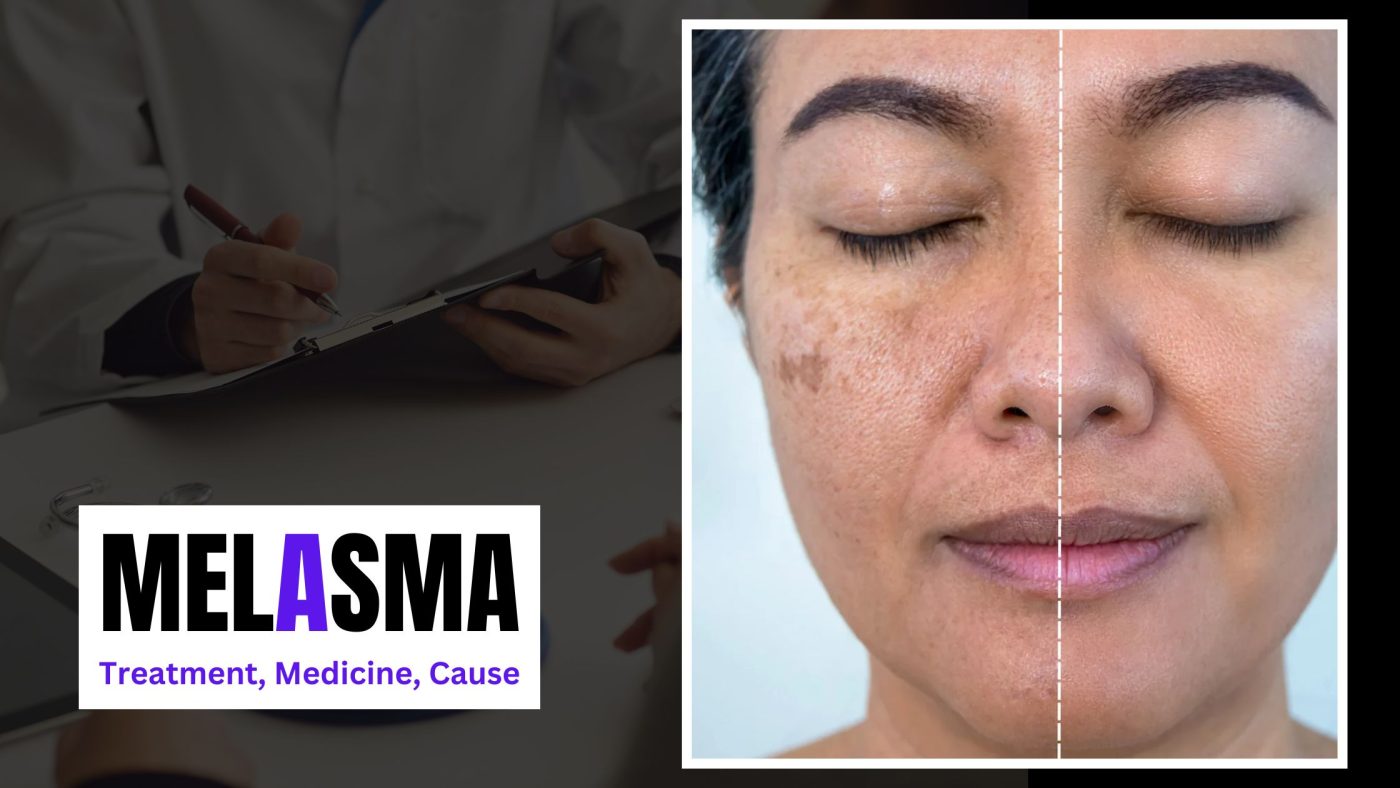Subtotal: 124.45 ₹
HEALTH BLOGS BY FITBYNET
Melasma: Treatment, Causes & Prevention
What is the Main Cause of Melasma?
Melasma is a common skin condition that leads to dark, discolored patches, typically on the face. It is caused by an overproduction of melanin, the pigment responsible for skin color. The main factors contributing to melasma include:
1. Sun Exposure
Excessive exposure to ultraviolet (UV) rays from the sun stimulates melanocytes (the melanin-producing cells), leading to hyperpigmentation. People who do not use sunscreen regularly are at a higher risk of developing melasma, as their skin is more vulnerable to UV damage.
2. Hormonal Changes
Hormonal fluctuations play a major role in triggering melasma. It is commonly seen in pregnant women (often referred to as the “pregnancy mask”), as well as individuals taking birth control pills or undergoing hormone replacement therapy. The increased estrogen and progesterone levels can overstimulate melanocytes, leading to dark patches.
3. Genetic Factors
If you have a family history of melasma, you are more likely to develop it. Genetics can influence how your skin reacts to sun exposure and hormonal changes.
4. Skin Irritation
Using harsh skincare products, excessive exfoliation, or undergoing frequent cosmetic treatments can irritate the skin and worsen melasma. Certain chemical ingredients, such as alcohol-based products, can make the skin more sensitive to sunlight, leading to further pigmentation.
5. Certain Medications
Some medications, including antibiotics, anti-seizure drugs, and blood pressure medications, can increase skin sensitivity to sunlight, making melasma more likely to develop. Always check with a healthcare provider if you notice skin changes while on medication.
How Can I Remove Melasma?
While melasma can be stubborn, effective treatments can help lighten the dark patches. Here are some common treatment options:
1. Topical Treatments
Topical creams and serums are often the first line of defense against melasma. Some of the most effective ingredients include:
- MELAMET CREAM: A combination of hydroquinone, tretinoin, and mometasone, which helps lighten dark spots and reduce inflammation.
- Momefur HT Cream: A formulation that helps control pigmentation and soothe irritated skin.
- Hydroquinone Creams: A widely used skin-lightening agent that inhibits melanin production.
- Azelaic Acid & Kojic Acid: Natural skin brighteners that help in reducing hyperpigmentation.
- Retinoids (Tretinoin, Retinol): Encourage skin cell turnover and fade dark spots over time.
- Niacinamide: A form of Vitamin B3 that helps reduce inflammation and pigmentation.
2. Professional Treatments
If topical treatments do not provide significant improvement, professional procedures may be recommended:
- Chemical Peels: Use of glycolic acid, salicylic acid, or trichloroacetic acid to exfoliate the skin and lighten pigmentation.
- Laser Therapy: Targets excess melanin and breaks it down without damaging the surrounding skin.
- Microdermabrasion & Dermabrasion: Exfoliate the top layers of skin to reveal fresh, unpigmented skin.
- Microneedling: Helps in collagen production and improves skin texture while reducing pigmentation.
3. Home Remedies
Some natural remedies can support skin health and aid in reducing melasma:
- Aloe Vera: Contains aloesin, which helps lighten dark spots and soothe inflammation.
- Apple Cider Vinegar: Has acetic acid, which acts as a mild exfoliant and skin brightener.
- Turmeric & Honey Mask: Turmeric has anti-inflammatory properties that can help balance melanin production.
- Lemon Juice: A natural bleaching agent, though it should be used cautiously as it can make the skin more sensitive to sunlight.
- Green Tea Extract: Contains antioxidants that protect the skin and reduce pigmentation.
Can Vitamin C Remove Melasma?
Yes, Vitamin C is a powerful antioxidant that can help reduce melasma by inhibiting melanin production. It also provides other skin benefits such as:
- Protecting Against UV Damage: Prevents further darkening of the skin.
- Boosting Collagen Production: Improves skin elasticity and reduces fine lines.
- Enhancing Skin Brightness: Helps in achieving a more even skin tone.
Using a Vitamin C serum daily, preferably in the morning before applying sunscreen, can help lighten melasma and improve overall skin health.
How to Prevent Melasma?
Preventing melasma is easier than treating it. Here are some key steps:
1. Use Sunscreen Daily
Applying a broad-spectrum sunscreen with SPF 30 or higher is crucial in preventing melasma from worsening. Even indoor lighting can contribute to pigmentation, so sunscreen should be worn daily, regardless of outdoor exposure.
2. Wear Protective Clothing
Hats, sunglasses, and protective clothing help shield the skin from harmful UV rays. Wide-brimmed hats are particularly useful in preventing sun-induced melasma.
3. Avoid Hormonal Triggers
If you notice pigmentation worsening after starting a new birth control pill or hormone therapy, consult your doctor to explore alternative options.
4. Use Gentle Skincare Products
Avoid harsh scrubs, alcohol-based toners, and strong exfoliants. Instead, opt for soothing ingredients like aloe vera, ceramides, and hyaluronic acid to maintain skin hydration.
5. Maintain a Healthy Diet
Eating foods rich in antioxidants like Vitamin C, Vitamin E, and Omega-3 fatty acids can help improve skin health from within. Hydrating well and maintaining a balanced diet can prevent skin issues.
Final Thoughts
Melasma can be challenging to treat, but with the right approach, it can be managed effectively. Whether using medical treatments, natural remedies, or lifestyle changes, consistency is key.
If you’re looking for genuine and trusted medicine for melasma, buy online at FitByNet Pharmacy for quality and authentic skincare solutions. Always consult a dermatologist before starting any treatment to ensure the best results.

 Gynomon Capsule-Sanzyme ltd
Gynomon Capsule-Sanzyme ltd 